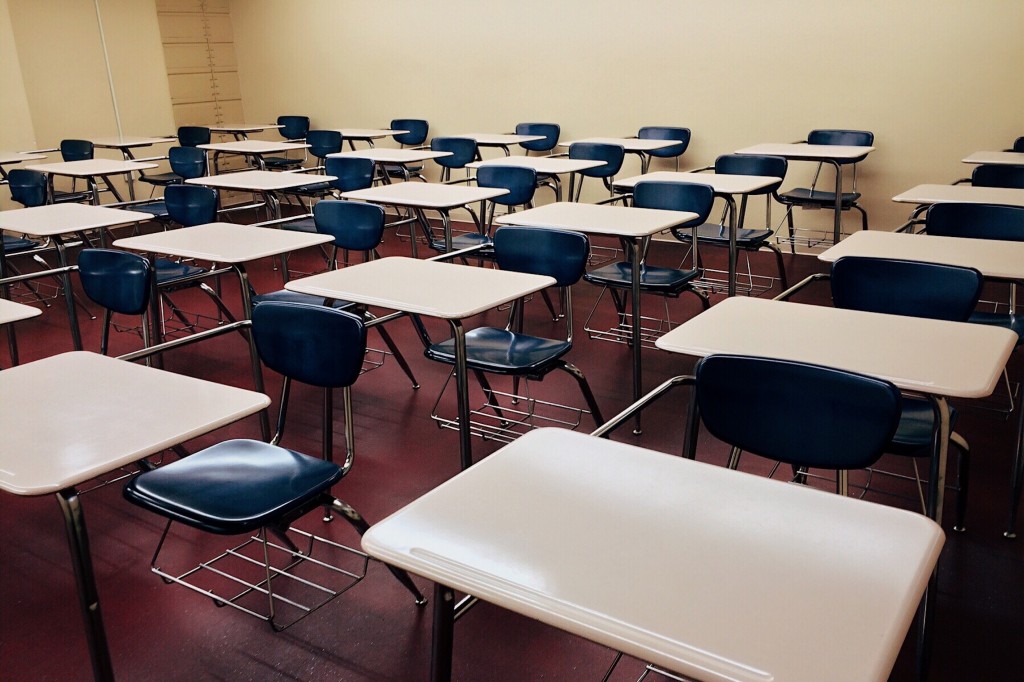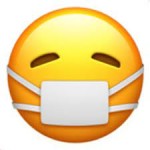For the first time ever in my career, you can walk into my classroom almost any time these days and it is silent, students sitting facing forward in their desks. District policy dictates that the desks face the front of the room.
Because students are working on computers, reading slides and swiping through them on a touchscreen, there is not even much background noise, like binders clicking open and closed, the pencil sharpener, the shuffle of a backpack being dug through. Not even typing, really. Everyone’s earbuds are plugged in tight and these newfangled ones don’t even overflow music that’s turned up too loud.
This year I am, for the first time, an interventionist instead of a content area teacher, facilitating credit recovery. This means that everyone is making up the credits they need on a platform called Gradpoint, and even if students have a classmate working on the same course, they may be remote (or incommunicado) or in a totally different place in the course. They started at different times, worked independently all through first quarter, and continue in their silos.
The first three weeks back to in-person learning, I had approximately ¼ of my students in my classes, since many had opted to stay remote, and we had alternating days with half of the in-person students each day. For me, this meant that I had between one and six students in each class period. Since then, students have come back for five days each week, and my numbers have gone up. In one class I have about 8 kids show up on a daily basis. It’s a completely new world, and many of these at-risk students have opted to stay remote for a variety of reasons, including siblings at home, work schedules, parental fears of infection or vulnerable people living in their households.
After those first couple of days of connecting with everyone in person, communicating revised expectations and learning the names that went with each mask, eyes and hairstyle, it took me a while to figure out what to do with myself. I sensed that some students felt the same way.
I did have to run concurrent WebEx sessions, but hardly anyone showed up at first, continuing the trend from first quarter that I only saw students when they decided it was urgent or they needed to test (not unreasonable at all). It only took a few moments to walk around and check with all the in-person students. I had to resist the urge to chat with them. They did not have time for chit-chat in the middle of work time. But such silence!
One day early on, during 7th period, I opened my eyes and realized I had fallen asleep momentarily, sitting straight up at my desk. Thick silence filled the room and my ears, and made me wonder if I had simply lost my hearing. I was completely disoriented.
And then I set to work creating routines. Each day students set and assess personal goals on a class Padlet (a virtual bulletin board). We talk about writing specific, measurable and relevant goals. (I did concede that some days, “staying awake” might be relevant, but hopefully not every day. It’s not specific enough to get them through their classes, anyway.) I devised the most non-contact and mask-and-facing-forward-friendly way to visibly celebrate and recognize progress through their classes by creating a sticker chart system. Colorful paper and stickers seemed more desirable than digital badges at this point. I try to convince students it is their last chance to be treated like little kids. They seem to enjoy it.
With three weeks of A/B days followed by the transition to five day weeks for students, it took my students some time to begin to make real progress. Many had not worked on their courses before we started back in person, and some didn’t have the knack of making their way through notes and quizzes independently, so in addition to developing some study strategies to share, I tried to create a sense of urgency by designing a tracker that showed how many weeks remained to finish their courses, with mixed success.
I text and email those remote students who have not been working, which is most of them. I have awkward full-volume conversations with students over WebEx in an otherwise silent classroom, with one earbud of my bluetooth headset in. I have trouble hearing what my in-person students ask from behind their masks without pulling the earbud out. So I am forever putting in and pulling out a silicone disk. But thank goodness the students have their ears plugged up! I never thought that one of my classroom expectations would be to develop a good study playlist.
These days, I walk individual students through notes, and help them analyze questions they missed on tests. I talk through graduation plans as we examine their transcripts on a shared screen, and we discuss how to manage work schedules, caring for siblings and other responsibilities and distractions. We look over their grades in other classes and I coach them on how to self-advocate. I do a happy dance when a student finishes their course.
However, except for conferencing with students, my classroom is quiet, with students facing forward in rows. When I applied for this position, I hadn’t considered that I would miss designing collaborative activities and building community through our shared academic purpose as much as I do. We will see how the next semester begins, but as this one ends I will be reflecting on the purpose of community, student-to-student talk, and what place it has in a credit recovery classroom.











Comments 1
I’m glad to know I’m not the only one who struggles with a silent classroom. Credit recovery opportunities are so important, and your students are lucky to have someone who also checks in and rewards their progress.